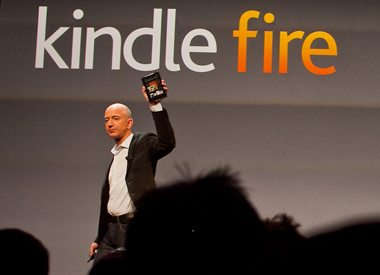Tech
Amazon's Kindle Fire just nuked the tablet market: Winners and losers
Amazon just split the tablet market with Apple. The Kindle Fire is subsidized because you'll shop more. Apple will stay high-end. Every tablet maker in the middle is screwed.

Amazon CEO Jeff Bezos took the stage Wednesday to unveil an arsenal of devices that are going to disrupt rivals like Barnes & Noble as well as Android tablet makers.

Also: CNET live blog | Amazon's Bezos unveils Kindle Fire; color tablet computer | Amazon's Kindle Fire; At $199, finally a viable college tablet | Amazon's Bezos unveils Kindle Touch, $99; Kindle, $79 | CNET: Amazon unveils trio of Kindle e-ink readers | Nook vs Kindle Fire specs | iPad vs Kindle Fire specs All Kindle coverage
Here's a look at the winners and losers in the wake of Amazon's latest line-up of Kindles:
Winners:
- Amazon: This tablet isn't about hardware. It's about consumption of Amazon services like music, streaming movies and apps. The Kindle Fire is an extension of Amazon's store. How can Amazon price at $199 for a Wi-Fi tablet? Because you'll shop more, consume more and be an Amazon Prime subscriber. The Kindle Touch and Fire equate to a lot more shopping and usage.
- Android market share: Should Amazon's heavily customized Android tablet take off it will go a long way to bolstering the operating system's market position. Today the tablet market is all iPad all the time. Amazon will change that.
- Apple: Amazon's tablet isn't an iPad killer by any stretch. In fact, Amazon's aggressive pricing creates two tablet markets---high end and near disposable. Apple can hold its pricing. So-called iPad killers won't be able to hold the market. In other words, Amazon and Apple just split the tablet market. There are $199 tablets (Fire) and $499 tablets (iPad). Anyone in the middle is toast.
Losers:
- Android tablets: If HP's TouchPad fire sale ruined the Android tablet market, Amazon just killed it. A color tablet at $199 will kill pricing for Android tablets. Rest assured, Amazon will cut prices later. In other words, $99 is the new price point in just a few months. It's going to be ugly for select hardware makers. Here's a scenario: You can buy a Kindle Touch (starting at $99) and a Kindle Fire tablet for under $300 and still undercut most tablet makers.
- Barnes & Noble's color Nook: Yes, Amazon was late to the color tablet/e-reader party. But Barnes & Noble will have to cut its price from $249. That will squeeze margins for Barnes & Noble, which doesn't have the financial firepower to hang with Amazon. On the e-reader front, the squeeze is still on.
- Android 3.0 Honeycomb: What does it say when the two bestselling tablets are hybrid e-reader/tablets running on a lesser version of Android. It says Honeycomb isn't that great.
- Research in Motion: If Amazon will sell you a PlayBook-like tablet starting at $99, what is RIM going to do. RIM lacks apps---no Angry Birds---scale and pricing. The PlayBook may be over.